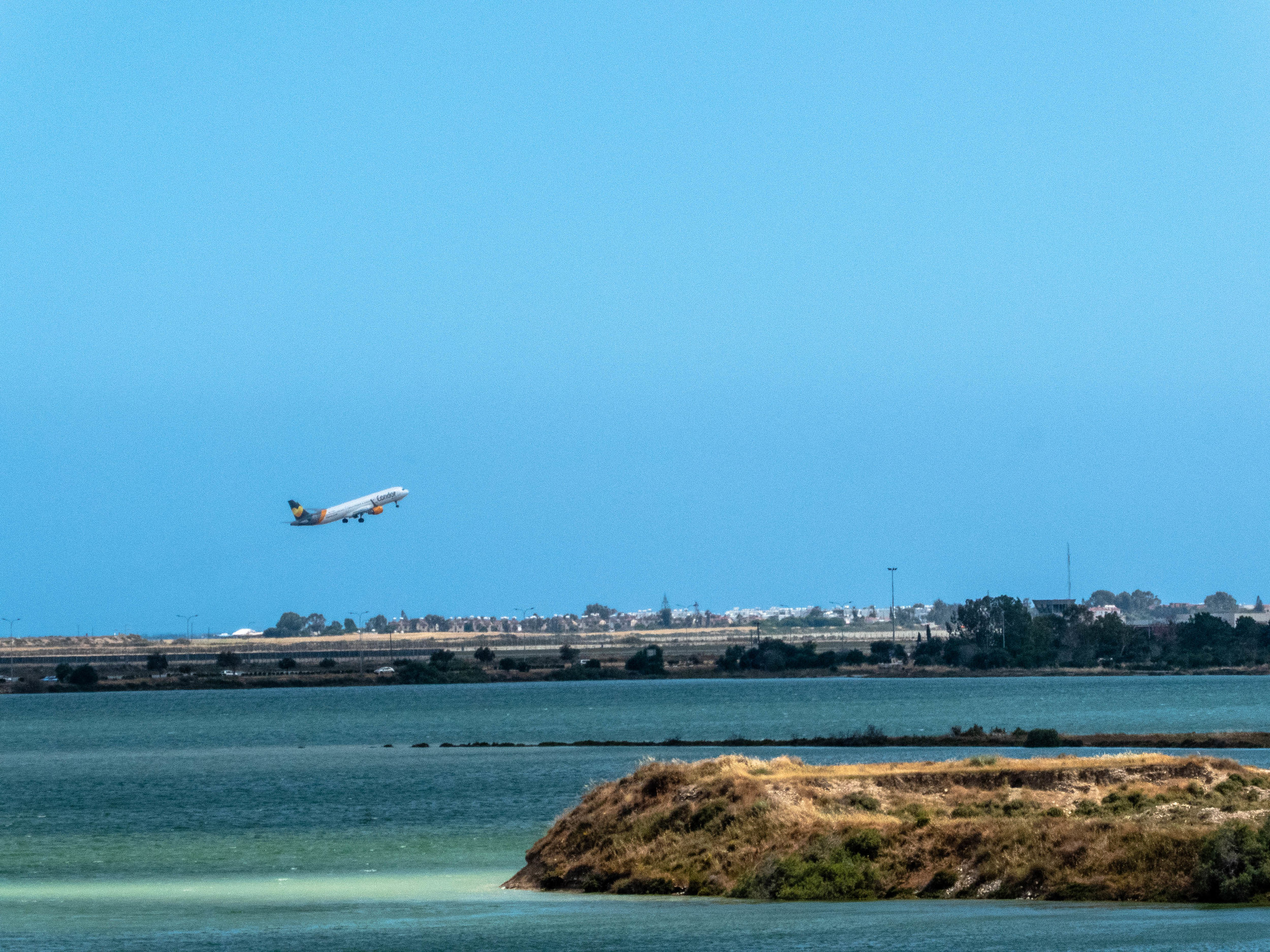To me running and travelling go together like salt and pepper. All I need to do is lace up the shoes, head outside and take in a whole heap of things I wouldn’t otherwise see. So it proved to be when I ran around the Salt Lake in Larnaka, situated near Cyprus’s main international airport.
A plane spotter’s dream
One of the most significant wetlands in Europe, the Larnaca’s Salt Lake covers an area of 2.2 square kilometres. During winter it is home to migrating birds, most notably the thousands of flamingos that stop off between November and March. It is during these winter months that there is usually enough water to support abundant populations of the red brine shrimp called Artemia. While gorging on the shrimp the flamingos then get their distinctive red colour. I was lucky enough to still see a few stragglers on their migratory route. Not many, but enough to give a bit of an idea of how amazing it would be when up to 7,000 are crowded into the lake.
A line of flamingos
Legend has it that Saint Lazarus, who we met in our earlier post, was responsible for the lake's saltiness. He came across a rich landowner one day and requested some food and drink. When she refused, claiming her vines had dried up (I’m not sure if this is a metaphor for something else or not), Lazarus replied "may your vines be dry and be a salt lake forever more." Whilst the truth of that encounter might be up for debate, what isn’t is that due to the lake’s salinity, salt made the city of Larnaca extremely wealthy and used to be one of Cyprus’s major exports up until 1986 when its collection ceased.
Interestingly, the lake’s saline nature isn’t actually a result of sea water. Rather, the winter rains dissolve a huge underground reserve of salt and when summer’s baking sun evaporates the water, the salt left behind increases the overall salinity leaving in some places, flat plains of dried salt.
But that’s some months away from when I visited. Instead, I got to run amongst the tall golden grasses and witness hay bailing time in the farm’s around water’s edge.
Golden grasses of Larnaca
Hay bales everywhere
In addition to the farm scenery and water bird life, there is plenty else to see. I came across a number of sheep, lizards and a 1.5 metre Black Whip Snake. These can grow up to 3 metres in length and are considered Europe’s longest snake. Thankfully, it is not poisonous and after seeing me puffing along the trail, it simply turned around and slithered back quickly into the undergrowth before I had a chance to take a photo.
Cute little church/tombstone on the side of the trail
Of potentially greater interest is the Roman aqueduct, known as Kamares or “Arches”. These mid 18th century water channels spanned some 15 kilometres in their day - 8 km underground and 7 km on substructions and arcades. While three separate sections survive today, the one’s which I ran past and which also are the most easily accessible, run only for a length of 300 meters. Nevertheless they were quite impressive.
Heading towards Larnaca’s Aqueduct
More views of Kamares
The Larnaca Salt Lake is also especially important for followers of Islam due to the Mosque Hala Sultan Tekke residing at lake’s edge. This serves as a shrine to Ubada bint al-Samit, who was a companion and possibly a foster mother to the Prophet Mohammed. It is rumored that she died here by falling off a mule during the caliph Muawiyah I’s invasion of Cyprus in 647.
Mosque views from the farmlands
And from across the Salt Lake
All up, it is probably about 12 to 13 kilometres around the lake. Factor in some wrong turns, and side detours to get to better vantage points for spotting birds etc, and you’re probably looking at 16 plus kilometres, which makes this a pretty full day if you were to walk it. With the heat in the summer months, it definitely is advisable to take plenty of water and food.
Of course, at the end of all this virtuous exercise, it’s essential that one refuels, which is something that I take very seriously.
A well earned 1 Euro beer
Having replenished all the necessary nutrients it was then time to think about heading out to dinner. Difficult choices lie ahead. Do I have pork or chicken souvlaki or maybe the lamb kleftoko? And do I wash it down with a big bottle of local beer or a carafe of wine (to be shared of course)? It’s a hard life being on the road.










